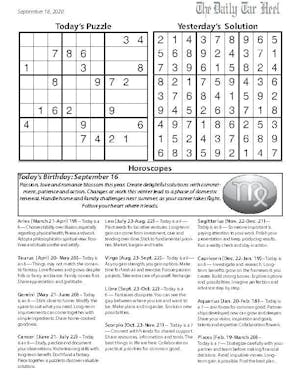Investigative journalist and historian Nick Turse has augmented his body of work with his historical nonfiction book, “Kill Anything That Moves: The Real American War in Vietnam.” Turse will be at Flyleaf Books Sunday to discuss “Kill Anything That Moves,” which reveals the extensive violence against Vietnamese civilians, ultimately leaving 2 million dead, 5.3 million injured, and 11 million displaced.
Staff writer Jaleesa Jones spoke with Turse about his hard-hitting expose.
Daily Tar Heel: Describe the moment when you first discovered the documentation of these war crimes in the basement of the U.S. National Archives?
Nick Turse: It was brought to my attention by an archivist there. I was working on a different project about post-traumatic stress disorder in veterans and I was hitting one brick wall after another as far as research went. I was exasperated and I went to him and I said, ‘Look, I just need a lead — something to bring back to my boss.’ And he thought about it for all of five seconds and he asked me a question that ended up changing my life. He said, ‘Do you think that witnessing war crimes could cause post-traumatic stress?’ I told him I thought it was an excellent hypothesis and I asked what kind of war crimes, and he told me about these files and pulled them for me. Within an hour, I was leafing through about 30 archival boxes filled with the military’s own investigation of massacres, murder, rape, torture, assault, mutilation…horrific crimes reported by active duty G.I.s and recently returned veterans. And I knew almost immediately that this was a very signification collection that almost no one knew about.
DTH: How did some of the U.S. command policies promote violence against civilians?
NT: The entire war was set up in such a way that it made it inevitable that such large numbers of civilians were wounded. The institution of “free fire zones” — this was a legal fiction created by U.S. military that opened up wide swathes of the Vietnamese countryside to mere unrestrained attack by bombing, artillery shelling, and helicopter gunships. The military would claim that the area was an enemy base. They would sometimes put up a rudimentary effort to warn the people that an attack was coming — often this was either a loud-speaker flying overhead and many times people couldn’t hear those messages. Or, they would drop leaflets on the ground and these were largely illiterate, rural peasants who couldn’t make heads or tails of what these meant, and they would find themselves caught in these unrestrained attacks.
DTH: Can you explain the concept of “body count”?
NT: Vietnam wasn’t fought like a conventional conflict, where you have two armies fighting across a defined battlefield. So, the Pentagon was casting about for some kind of metric — to show that they were winning the war — and they came up the idea with body count, which is essentially you would kill your way to victory… This had disastrous consequences for civilians. Many times civilians were killed and just called in as enemy dead and the higher command didn’t ask questions.
DTH: And how was the U.S. military able to train soldiers for this carnage?
NT: One of the ways in my interviews with American combat veterans that came up over and over again was the dehumanization of the Vietnamese and the racism that infused their training. I talked with many veterans who told me that as soon as they got to boot camp, their basic training, they were told that you never call them Vietnamese. You call them gooks or dinks, slants, slopes, rice-eaters — anything to deny them humanity, anything to make it easier for them to kill the Vietnamese.
DTH: How many years did research for your book take? And did any veterans show a change of heart?
NT: I worked on this project, in addition to other work, over about 11 years. Many of the men told me things that they had done back during the war — abuses that they’d committed against civilians — at the time, they thought it was the right thing but all these years later, they’ve been plagued by it. They’ve spent their whole lives trying to escape some things they had done basically as teenage boys — as 18-, 19-, 20-year-olds.
DTH: What has been the response to your book?
NT: About 80 percent of the Vietnam vets, it’s been a positive response and so many more men have come to me and said, ‘This is the war that I saw, and this is the war that I couldn’t talk about for years.’
arts@dailytarheel.com
To get the day's news and headlines in your inbox each morning, sign up for our email newsletters.




